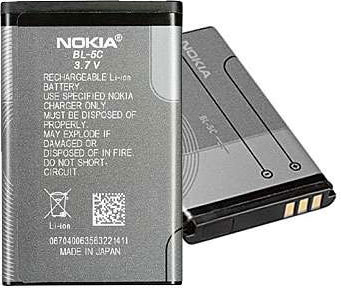The best tip to increase the life of smartphone batteries
Researchers at the University of Michigan have found a way to boost smartphone battery power with the E-MiLi (Energy-Minimizing Idle Listening) firmware, which can extend battery life by up to 54% despite Wi-enabled. Fi.

Increasing battery life is always a hot issue in the media industry. Today, needs such as surfing the web, playing games, and checking e-mail have almost become indispensable for many 'cricket' users. And most mobile users expect battery life to be improved.
And the battery life for communications devices, especially smartphones, can be greatly improved thanks to the help of Professor Kang Shin and the University of Michigan graduate student Xinyu Zhang.
Thanks to the E-MiLi firmware , the phone will be in standby mode when it is not used. When in this state, the wireless radio device will run at a speed of 1/16 of the normal speed, and only return to its original state when receiving data.
According to the professor, the E-MiLi is capable of improving battery life for mobile devices by 54%, and will save 44% of energy.
Apple 'flawed apple' has also studied battery life for years. Recently, it allows talk time of up to 7 hours using 3G services, and 14 hours if using 2G.
As expected, this device can last for 300 hours on a single charge. Motorola recently launched Droid Bionic with almost 11 hours of talk. As expected, it can be used for 200 hours.
However, for this technology to be applied to devices like iPhone or Droid Bionic, there should be a few more stages.
According to Science Daily , in addition to "processor-slowing" software, the E-MiLi firmware will have to install the Wifi chip set, then attach to the mobile phones.
In order for E-MiLi to work, there must be a command to encrypt and that code can be solved by wireless radio device in 'subconscious mode' mode . This is only possible when the firmware is properly mounted.
The University of Michigan has adopted this device in industry, and plans to transfer the invention to chipset manufacturers. However, the specific time has not yet been announced.
- Smart smartphone battery but still paper thin
- The 5 future solutions will make your phone battery much more buffalo
- New long battery life from wood and sodium
- 10 ways to increase laptop battery life
- 400 year history of battery formation and development
- Japan launches smartphone measuring radioactivity
- Find out how to make batteries from urine very low cost, high performance
- How to charge the smartphone battery properly and effectively
- The phone is made from bamboo
- Why does US aviation forbid to carry spare batteries in checked baggage?
- Successfully built smartphone battery works well under -70 ° C
- Slow charging does not help extend battery life
 What is the Snapdragon SiP chip?
What is the Snapdragon SiP chip? How to create a yellow circle around the mouse cursor on Windows
How to create a yellow circle around the mouse cursor on Windows Edit the Boot.ini file in Windows XP
Edit the Boot.ini file in Windows XP 3 ways to restart the remote computer via the Internet
3 ways to restart the remote computer via the Internet